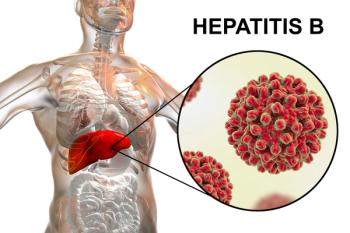
FDA approves treatment for postmenopausal women experiencing pain during intercourse
FDA has approved ospemifene (
“The approval of Osphena . . .can be viewed as a remarkable treatment option that will allow this population to continue to engage in normal sexual activity without the bothersome pain that can be associated with declining levels of estrogen," said Abimbola Farinde, PharmD, MS, clinical staff pharmacist at Clear Lake Regional Medical Center, in Webster, Texas. "For certain women this can lead to improvement in quality of life, and the ability to engage in an activity that they might have avoided in the past.”
Osphena, an estrogen agonist/antagonist with tissue-selective effects, is the first and only oral treatment alternative to vaginal or oral steroidal estrogens for women with dyspareunia due to menopause. Dyspareunia is a condition associated with declining levels of estrogen hormones during menopause. Less estrogen can make vaginal tissues thinner, drier, and more fragile, resulting in pain during sexual intercourse.
“While more than half of all women in the U.S. will experience symptoms of VVA at some time in their postmenopausal life, the vast majority of women with VVA are not being treated with a prescription medication because women and their healthcare professionals are not proactively discussing the condition and its associated symptoms,” said David J. Portman, MD, OB/GYN, and director of the Columbus Center for Women’s Health Research, Columbus, Ohio, in a Shionogi
“Dyspareunia is among the problems most frequently reported by postmenopausal women,” said Victoria Kusiak, MD, deputy director of the Office of Drug Evaluation III in FDA’s Center for Drug Evaluation and Research. “Osphena provides an additional treatment option for women seeking relief.”
Osphena’s safety and effectiveness were established in three clinical studies of 1,889 postmenopausal women with symptoms of VVA. Women were randomly assigned to receive Osphena or placebo. After 12 weeks of treatment, results from the first two trials showed a statistically significant improvement of dyspareunia in Osphena-treated women compared with women receiving placebo. Results from the third study support the drug’s long-term safety in treating dyspareunia.
Osphena is being approved with a boxed warning alerting women and healthcare professionals that the drug, which acts like estrogen on vaginal tissues, can stimulate the endometrium and cause it to thicken. In fertile women, this thickening of the endometrium occurs monthly before menstruation; in postmenopausal women, a stimulated endometrium is not normal. Women should see their healthcare professional if they experience any unusual bleeding as it may be a sign of endometrial cancer or a condition that can lead to it. Osphena should be prescribed for the shortest duration consistent with treatment goals and risks for the individual woman.
The boxed warning also states the incidence rates of thrombotic and hemorrhagic strokes (0.72 and 1.45 per thousand women, respectively) and the incidence rate of deep vein thrombosis (1.45 per thousand women). These rates are considered to represent low risks in contrast to the increased risks of stroke and deep vein thrombosis seen with estrogen-alone therapy.
During clinical trials, commonly reported side effects included hot flush/flashes, vaginal discharge, muscle spasms, genital discharge, and excessive sweating.
Newsletter
Pharmacy practice is always changing. Stay ahead of the curve with the Drug Topics newsletter and get the latest drug information, industry trends, and patient care tips.











































































































































































































